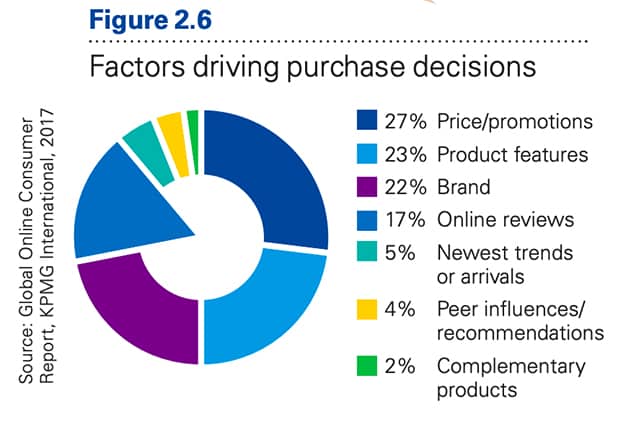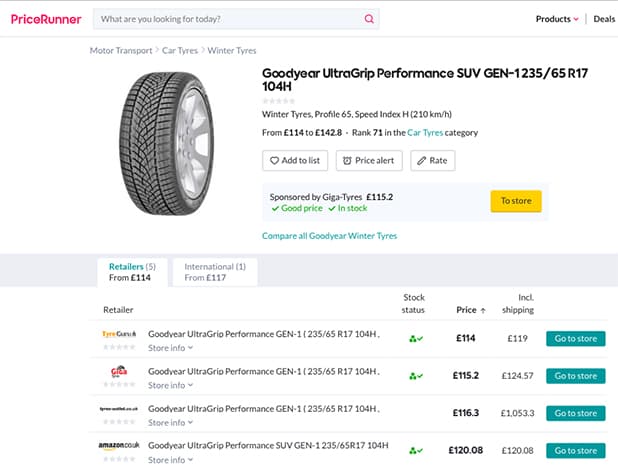Online shoppers’ awareness is far more advanced compared to consumers of the brick and mortar era. They know where to find the best price matched with the best value, and they utilize the technological tools to have price analysis that substantially reduces the time these processes take.
Meanwhile, online retailers have different tools at hand that help them offer a better shopping experience. But they have another primary concern. So many new firms enter the ecommerce market each day, and the competition gets harsher with each addition.
Retailers must also make the utmost effort to outshine the competition. Is there an easy way? Unfortunately not. But we can tell you where to start.

The first thing you must acknowledge is that price is the top reason why online shoppers choose a product or brand. Since most of the online stores have similar or identical product assortments, meaning, they sell the same products, they have to compete on price.
Even though some people claim that today’s shoppers value the core values of business over price, research proves otherwise.

Then, what’s the first step in building a pricing strategy that’ll give you a competitive advantage?
How to conduct a price analysis
You don’t have to worry, it’s not rocket science. In fact, it’s a necessary, highly beneficial, but not exactly painful process, and we’ll guide you through it.
First, you need to know where you stand in the competitive landscape. Look at the example below.

Online consumers know where to search for good prices. Don’t you do so when you’re shopping online? It’s highly likely that you’d prefer the store at the top.
That’s why most of your competitors try to offer the best deal, and you must know where your prices stand against theirs.
But before anything else, define the competition. Who else sells the same products you sell, and who offers substitute products to yours? The first category is your direct competition, and the latter is indirect competition.
Calculate the Price Index
After identifying your competitors, find the average market price of a product. Then, calculate the price index for all your products.
We won’t be discussing how to conduct PriIe Index analysis here, but you can find it in another blog post where we explain how to conduct one in detail.
To give you an idea, here is a quick formula you can use to calculate it for a single product.

What will you get out of Price Index analysis?
Let’s say a competitor has better prices than yours for a particular brand, but it’s more expensive for all the other brands you match with. Most likely, she got a better deal with the supplier. Another possibility is that she has lower overhead costs, but it would likely be reflected in the rest of the brands’ prices if that were the case.
Now that you have this information, you’ll have leverage when negotiating with the supplier.
Even if you don’t get a better deal, you can focus on your weak side and put a greater effort into that brand’s marketing. Or, you can decide to direct your efforts away from that brand into one that you have a competitive advantage. Either way, you’ll be able to make a well-informed decision.
In another scenario where you’ve noticed that you offer a below-average price for a product, you can increase your prices up to a point where you still give the best price but also have increased profit margins.
Make use of historical price data
We know that keeping track of competitor prices is both time-consuming and very costly. But it contains extremely valuable knowledge.
When you keep collecting that information for a while, you’ll notice the trends and patterns in competitor behavior. You’ll find out their off-season discount calendar, the products they discount the most, how much they increase the prices after Cyber Monday, etc. When you have this information, you’ll be able to react to their pricing strategies without experiencing a loss.
Furthermore, you must also analyze your historical price data. Which price points attracted more customers, which products are more elastic than others, and what has changed regarding your competitive strength since the beginning of the year? Did you gain competitive strength, and is it only because of your below-average prices?
You can extract so many insights from historical price data, but obtaining the big data is not easy.

Pricing software can level up your game
Tracking competitor prices manually takes so much time that neither of us has. Online retail giants build their own price tracking software to make well-informed pricing decisions. You can go that way, and you can also use pricing SaaS. Either way, you’ll be doing your business a great favor.
Price tracking software automates, as the name implies, the competitor price tracking process. Some of them, including ours, can also automatically adjust your prices according to the rules you’ll determine.
For example, if you want to be 5% cheaper than the cheapest competitor in a certain product/category and at the same time, 14% more than your costs, the software can do it for you.
Furthermore, it provides historical price data, which we’ve talked about above. The software can help you a lot both in short-term and long-term planning.
A quick wrap-up
As an online retailer, you must know by heart that shoppers look for the best price. Therefore, you have to compete on price. Before deciding upon a pricing strategy, you must conduct a price analysis to see where you stand in the competitive landscape.
As a first step, you should define your competition. Then, calculate the price index to reveal the competitor’s strategy in the short term. Moreover, you should continuously adjust prices against competitors to preserve/improve your competitive strength.
However, for long-term success, you need to analyze historical price data to unfold what competitors plan for the long term and how they behave in the long run. Pricing software can ease these processes and help you obtain the big data that would otherwise be nearly impossible to obtain.
Frequently Asked Questions
1. Track competitor prices
2. Calculate price index
3. Analyze the historical pricing information to reveal patterns in competitor behavior
Use the findings when building your own pricing strategy. Use current competitor pricing data to offer competitive prices. Utilize the patterns you’ve detected in long-term strategic planning.
It’s a price consistent with customers’ willingness to pay. Willingness to pay is the maximum amount of money the buyer is willing to give up in exchange for a product/service.
The perfect pricing strategy depends primarily on the business objectives and long-term goals of a company. Define your goals, compare the pros and cons of all ecommerce pricing strategies, and determine which one(s) best fits your strategic planning.


